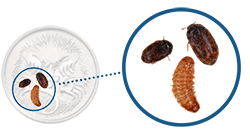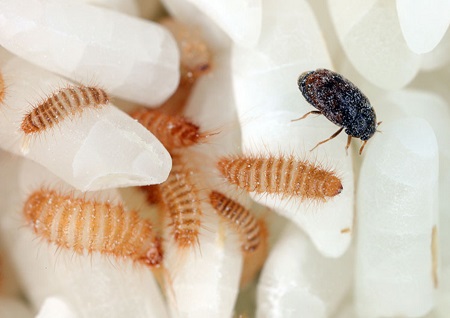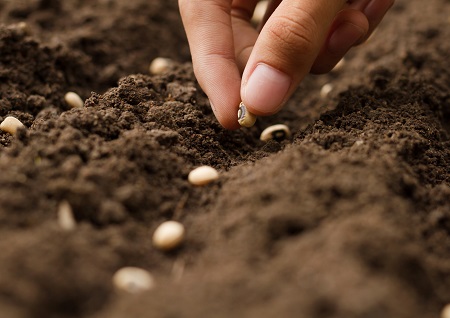On 7 July 2022, we commenced a pest risk analysis on khapra beetle. For more information visit the Khapra beetle pest risk analysis web page.
 Khapra beetle (Trogoderma granarium) is a small but serious hitchhiker pest, and we want to keep it out of Australia. As such, we have implemented urgent measures that will affect the importation of plant products and sea containers.
Khapra beetle (Trogoderma granarium) is a small but serious hitchhiker pest, and we want to keep it out of Australia. As such, we have implemented urgent measures that will affect the importation of plant products and sea containers.
Khapra beetle is Australia’s number two National Priority Plant Pest and the number one plant priority pest for grains. It is not present in Australia, but it is a highly invasive pest that poses a major threat to Australia’s grains industry. Khapra beetle destroys grain quality making it unfit for human or animal consumption.
A number of countries, including Australia, have seen a recent increase in khapra interceptions. It is being detected in:
- imported plant products
- goods that it previously had no association with
- sea containers as a hitchhiker pest
- imports from countries not known to have khapra beetle.
Learn more about:
- khapra beetle in our pest bulletin
- the hitchhiking risk of khapra beetle in our article.
Posters
We have developed the following posters on where to look for khapra. Help us keep khapra beetle out of Australia by sharing them with your networks.
Look out for khapra beetle
Download
English Poster: Look out for khapra beetle (PDF 1.2 MB)
English Poster: Look out for khapra beetle (DOCX 1.5 MB)
Arabic Poster: Look out for khapra beetle (PDF 1.4 MB)
Arabic Poster: Look out for khapra beetle (DOCX 1.1 MB)
Chinese Simplified Poster: Look out for khapra beetle (PDF 1.4 MB)
Chinese Simplified Poster: Look out for khapra beetle (DOCX 1.1 MB)
Chinese Traditional Poster: Look out for khapra beetle (PDF 1.4 MB)
Chinese Traditional Poster: Look out for khapra beetle (DOCX 1.1 MB)
Vietnamese Poster: Look out for khapra beetle (PDF 1.4 MB)
Vietnamese Poster: Look out for khapra beetle (DOCX 1.1 MB)
If you have difficulty accessing these files, visit web accessibility for assistance.
Let's keep Khapra beetle out
Download
Khapra beetle poster (PDF 546KB)
Khapra beetle poster (DOCX 2.1 MB)
If you have difficulty accessing these files, visit web accessibility for assistance.
Video
The below video gives an overview of the risks khapra beetle poses to Australia and how to identify this significant pest.
These are countries where khapra beetle has established.
| Afghanistan | Morocco |
| Albania | Myanmar |
| Algeria | Nepal |
| Bangladesh | Niger |
| Benin | Nigeria |
| Burkina Faso | Oman |
| Côte d’Ivoire (Ivory Coast) | Pakistan |
| Cyprus | Qatar |
| Egypt | Saudi Arabia |
| Ghana | Senegal |
| Greece | Somalia |
| India | South Sudan |
| Iran Islamic Republic of | Sri Lanka |
| Iraq | Sudan |
| Israel | Syrian Arab Republic |
| Kuwait | Timor-Leste |
| Lebanon | Tunisia |
| Libya | Türkiye |
| Mali | United Arab Emirates |
| Mauritania | Yemen |
Implementation dates for the urgent actions
Download
Infographic: Khapra beetle urgent actions phases (PDF 447KB)
Infographic: Khapra beetle urgent actions phases (DOCX 52 KB)
If you have difficulty accessing these files, visit web accessibility for assistance.



